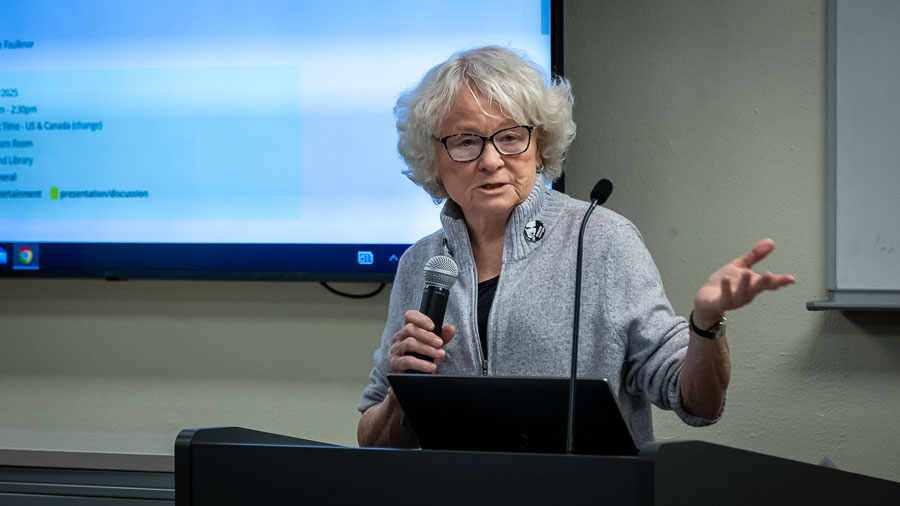OTHER VIEWS: History can help Oregon stem rise in bias crimes
Published 5:30 am Tuesday, July 18, 2023

- other views logo
“Fever in the Heartland” is one of the most pertinent new books this season, especially for Oregon — where extremism is on the rise.
It is a thoughtful history and an engrossing if disturbing read by author Timothy Egan about the rise of the Ku Klux Klan in the 1920s — its high water mark nationally — and its local and regional impacts. The Klan became a power in many states and took over the state of Indiana.
Its next strongest outpost, among the then-48 states, was Oregon, which had the second-highest number of Klan members per capita.
The racist, anti-semitic and nativist Klan controlled Oregon’s top state and local officials, from governor on down. That reflected grass roots strength: More than 50 chapters statewide, more than 30,000 “sworn” members and many more who were unofficial but supportive.
Oregon had the right demographics for the organization, being overwhelmingly white, Protestant and native-born. It also had the right history; among other things, the state constitution originally banned Black people from living here.
The Klan exploded in prominence in Oregon in 1921 and 1922, but by 1930 the air had left the balloon, and it collapsed.
Why did this happen? In a paper extensively recounting the Klan’s activities in Oregon, Chapman University researcher Ben Bruce argued that “poor leadership, corruption, political overreach, mismanagement and bigoted violence caused the Klan to collapse just as quickly as it came to prominence.
He also said that criticism of the Klan by many Oregon newspapers was a key factor.
The Klan was tightly organized, almost in a military fashion, which is a major contrast to today’s loosely-networked extremists.
The question of what happened remains relevant now as Oregon confronts a wave of domestic terrorism aimed in many cases at targets the Klan would have approved.
A legislative-ordered report on domestic terrorism from the Oregon Criminal Justice Commission, released July 1, showed a massive increase in “bias incidents” reported to a state-established bias hotline.
Reports increased by a startling 178% since the hotline launched in 2020. The data about incidents is extensive, and it has been thoroughly collected and analyzed. It has not, so far, led to many answers to the problem.
The commission’s new report listed five proposals, two of them endorsing continuing efforts by the hotline, two more involving help for victims of bias crimes and proposals to fix gaps in Oregon laws that make prosecution difficult in some cases. One example cited “graffiti on property belonging to a victim in a non-protected class.”
Those proposals all sound sensible — as far as they go. There wasn’t much, however, about effectively combatting or trying to curb bias crime.
A March 2022 report from the Secretary of State’s Office, offered a few more thoughts. Some involved better communication and coordination among state agencies, better definitions of terrorism and extremism and to “establish a statewide strategy with specific, measurable outcomes for countering violent extremism.”
But what’s the strategy, exactly? Where does this leave us when it comes to doing something about hate crimes beyond picking up the pieces after they happen?
Maybe the collapse of the Klan offers a few clues.
One big lesson from back then was in messaging. Newspaper campaigns and other media efforts help shift the minds of many people about what was acceptable and what wasn’t. Newspapers have less impact in Oregon than they once had, but lines of communication — social, personal and organizational — probably can be tapped.
Another lesson was the way the Klan fell apart when it was directly challenged, often by criminal cases and publicity about the details of them. Stronger enforcement against bias crimes probably has to be part of the picture.
A third point might involve leveraging in new ways the mass of data being collected and looking for patterns — geographic, ideological, psychological — with the aim of splintering and diminishing the networked groups driving the extremism. They can be pursued more effectively if we know more about them.
The means for doing all this are falling into place.
In his book, Egan was careful not to make explicit comparisons between the last ’20s and this current one. Still, the next logical step may involve doing, with purpose, what many Oregonians did almost inadvertently a century ago.










